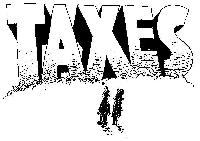
The structure and characteristic of a tax system can be understood from the share of direct taxes in total tax revenue. Of the two types of taxes, which one should have the highest contribution?
Before examining the question, we should have the basic understanding about both direct and indirect taxes. Direct taxes are taxes on income, property, capital gains etc. On the other hand, indirect taxes are taxes on goods and services. The main direct taxes are corporate income tax, personal income tax and capital gains tax, whereas the main indirect taxes are excise duties, customs duties, service taxes and sales tax (state).
In a country, if most of the tax revenues are coming from direct taxes, it means that the rich who have the ability to pay taxes have contributed more. It is the rich out of their profit (corporate) and income (personal income tax) that gives more tax revenue here. Here, as bulk of the tax revenue comes from the rich without injuring the poor, the tax system is progressive (taxes the rich more).
There is a basic principle in economics called ability to pay taxation. The principle instructs that tax revenue should be collected from those who have the ability to pay it. This principle indicate equity in the tax system. In the case of a direct tax dominated tax system, there is equity in the sense that the tax contribution comes from those who have the ability to pay (rich).
Now, in the case of indirect taxes, the rich and poor should pay equal tax rate while they purchase a commodity. Here, indirect taxes don’t consider the income of the consumer. Often people say that indirect taxes are regressive. The meaning is that it taxes too much the poor (same rate as on rich though the poor have low income) compared to the poor.
Hence, a tax system where bulk of the tax revenue is coming from indirect tax is regressive. On the other hand, a tax system where direct taxes contribute more to the tax revenue is progressive, equitable and hence is ideal.
In India, the indirect taxes have contributed to nearly 80% of the tax revenues in early 1990s. Now, since 2007, direct taxes are contributing around 54% of the central government’s tax revenue. This indicate that the Indian tax system is getting more and more progressive.
*********









